Exotic motors triumph over autonomous machines at the Geneva Motor Show
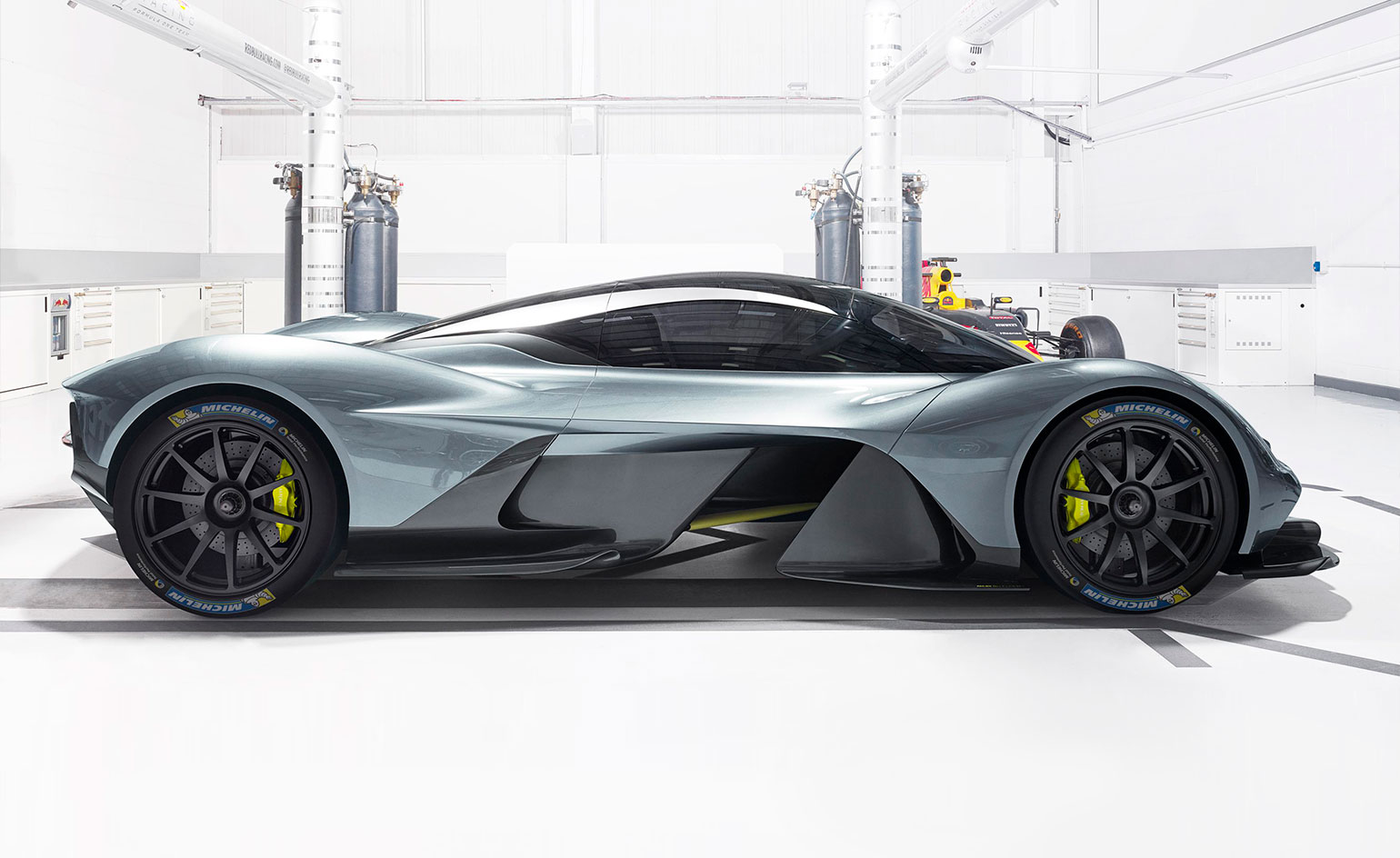
Autonomous driving is side-tracking. The conversation has temporarily diverted from its original explosive futuristic narrative for an altogether more tangible one. The automotive world is looking at more pragmatic solutions that can be applied now, without the complications of full autonomy. The excitement is still there, with carmakers focusing much of their R&D efforts into making this a long-term reality. But for now and the near future, the driverless vehicle has been placed on hold for semi-autonomy – as was evident on the pavilions of this year’s Geneva Motor Show.
Customers are not entirely ready to hand over complete control to a machine. Nor, it seems, are they willing to give up driving pleasure. So, for now, autonomous technology will help us to be safer drivers – acting as a co-pilot who controls the wheels on long commutes and dull motorway routes, while we take back sovereignty on fun, twisting, challenging roads.
BMW is going as far as repositioning itself as a tech firm acknowledging the intimacy between the two worlds. The 5 Series Touring and new 4 Series at Geneva are testimony to the company’s commitment to making all its cars as connected, piloted and advanced as possible, and crucially responding quickly to new technology. With competition from Google and Apple, and in response to the likes of Tesla, speed of delivery is key to the survival of traditional carmakers. A similar approach is happening with Audi, Mercedes and across the premium auto world.
Elsewhere, there were plenty of SUVs of all shapes and sizes on display. Volvo’s latest XC60 continues the marque’s confident design theme. Yet with its formal simplicity, clean and clear visual language, and perfect proportions, the Range Rover Velar is proof that Land Rover remains the most accomplished maker in this genre.
However, this being Geneva, the real stars of the show were the exotic motor cars highlighting the disparity between fantasy and reality. These exclusive cars can seem a little indulgent, though in terms of design and innovation they are also often the most accomplished products.
The McLaren 720S, for instance, is sensational. The two-seat sports car is so advanced in design and engineering that it almost feels like it skipped a generation from the 650S it replaces in the Sports Series. This is also a hugely important car for the young marque, for it represents the first production vehicle to be replaced since McLaren Automotive formed seven years ago.
‘It is special. It almost feels like a milestone in the maturity and development of the company,’ says chief executive Mike Flewitt. ‘We started out with one car, the 12C, which evolved to be a range of cars. Now that journey is over, we are replacing them one by one with new models.’ This includes 15 cars planned for 2022, half of which will be hybrids.
The Ferrari 812 Superfast is also fantastic to look at and, as the name suggests, surely a great pleasure to drive – as is the Aston Martin Valkyrie hypercar. Bentley’s 6e is an electric concept that explores the marque’s future design and previews some of the ideas to be seen in the upcoming new Continental GT. Meanwhile, Rolls-Royce displayed its bespoke collection, showing the marque’s unrivalled tailoring skills. We particularly enjoyed the custom-built Ghost, a thousand crushed diamonds infused in the paint.
These cars are all about voluptuous, visceral lyricism. They may be indulgent and exclusive, yet they are a reminder of the beauty and the romance of the motor car.
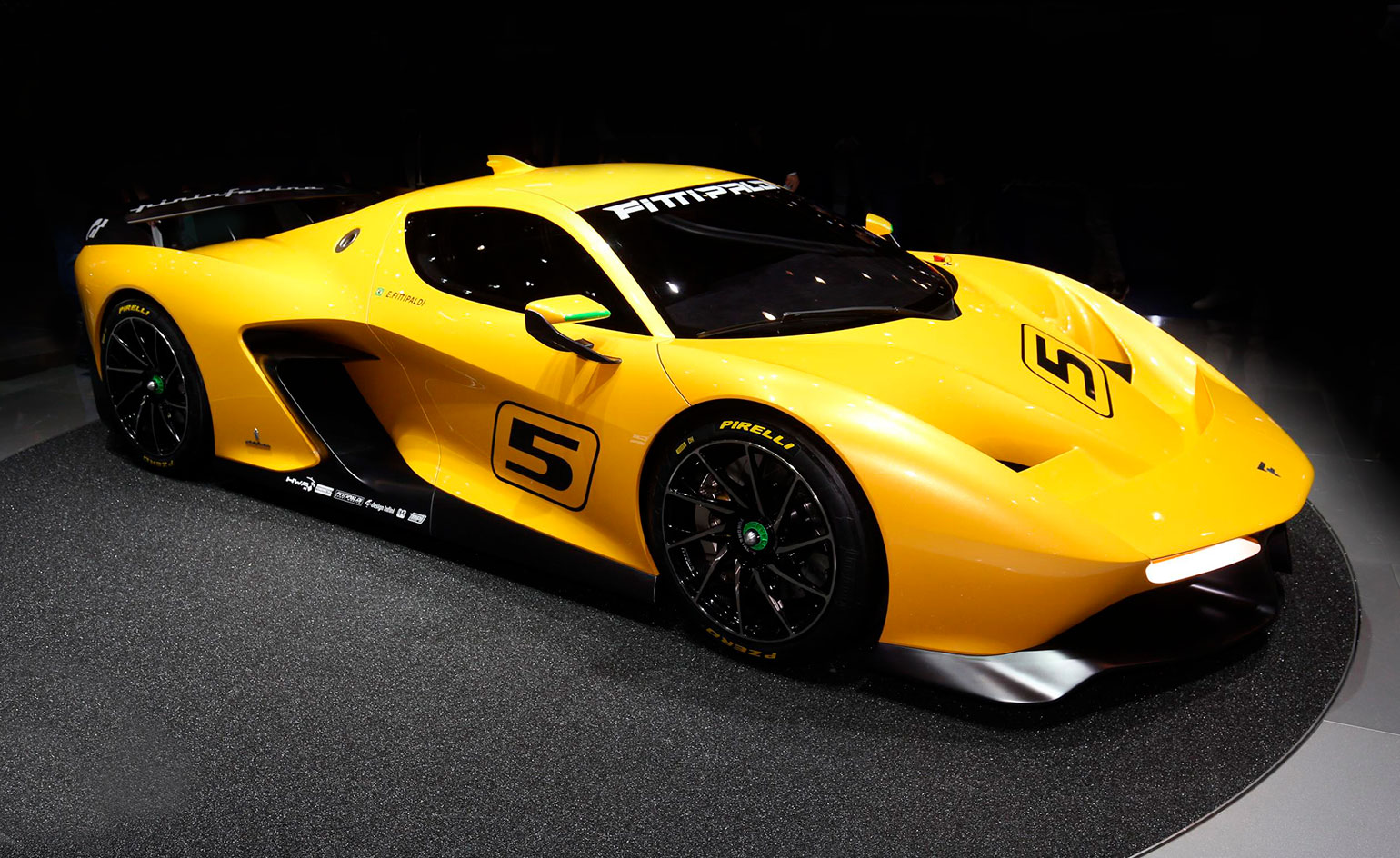
Pininfarina Fittipaldi EF7: The EF7 is a performance track car built in limited numbers by Pininfarina and Formula One champion Emerson Fittipaldi. The naturally aspirated V8 engine offers just under 600bhp while promising ‘friendly handling’ so drivers with little race track credentials can also enjoy the EF7 in safety. Only 25 cars are planned and the price has not been revealed
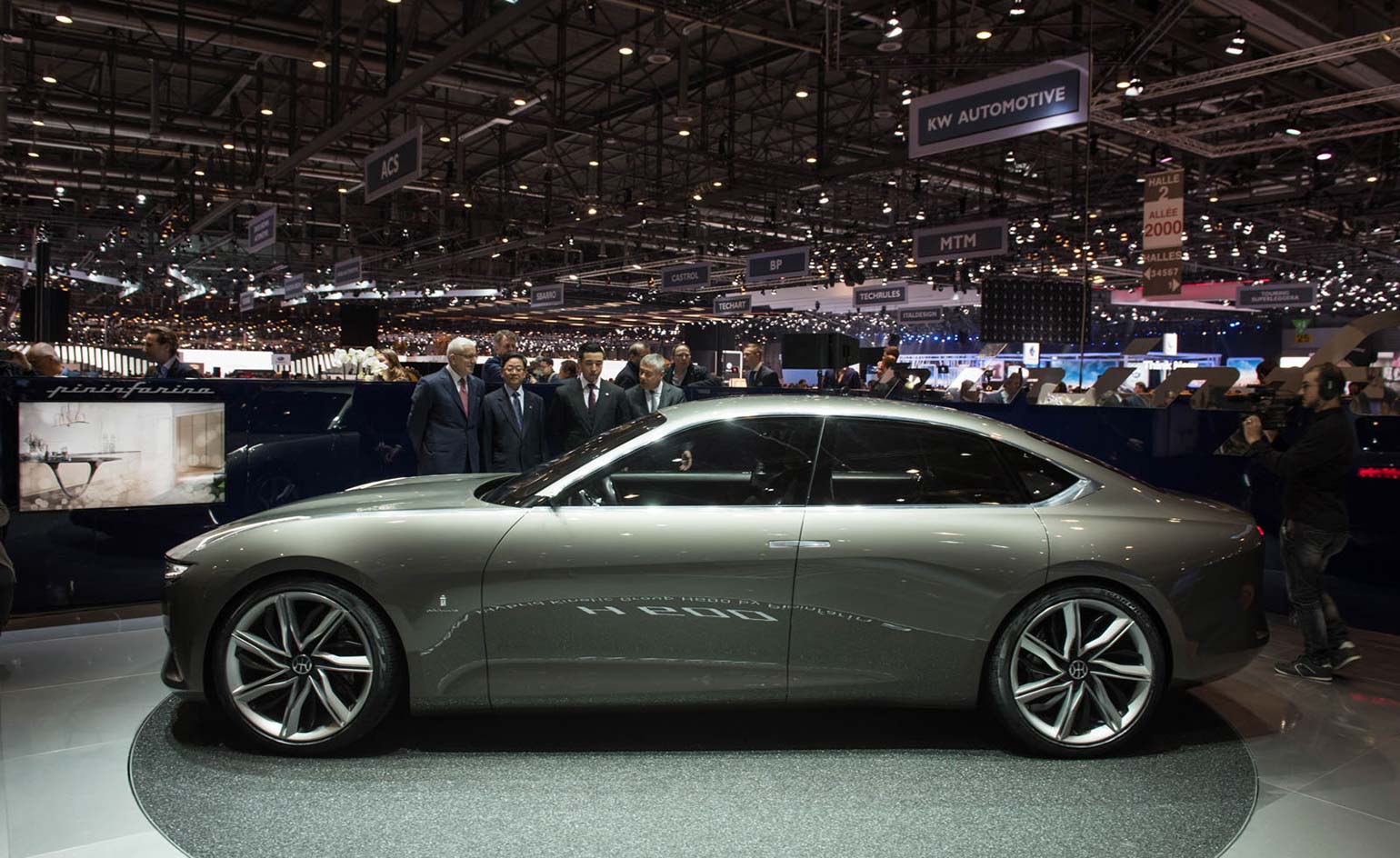
Pininfarina H600: The H600 luxury saloon is the first car to be made by the Italian design house in collaboration with the Hong Kong electric car tech firm Hybrid Kinetic. The ongoing partnership will see the design and development of a family of electric cars. This 800bhp hybrid concept is a large saloon – some 5,200mm in length – designed without a B-pillar which, together with the rear coach doors, allows for an expansive cabin made to look more so thanks to the slim floating seat design. The large grille is dramatic and functional, allowing air to cool the micro-turbine that acts a range extender to provide additional power to the motors and battery when needed. The company says battery range is estimated to be over 620 miles in extended range mode, and the car promises 0–62mph in just 2.9 seconds
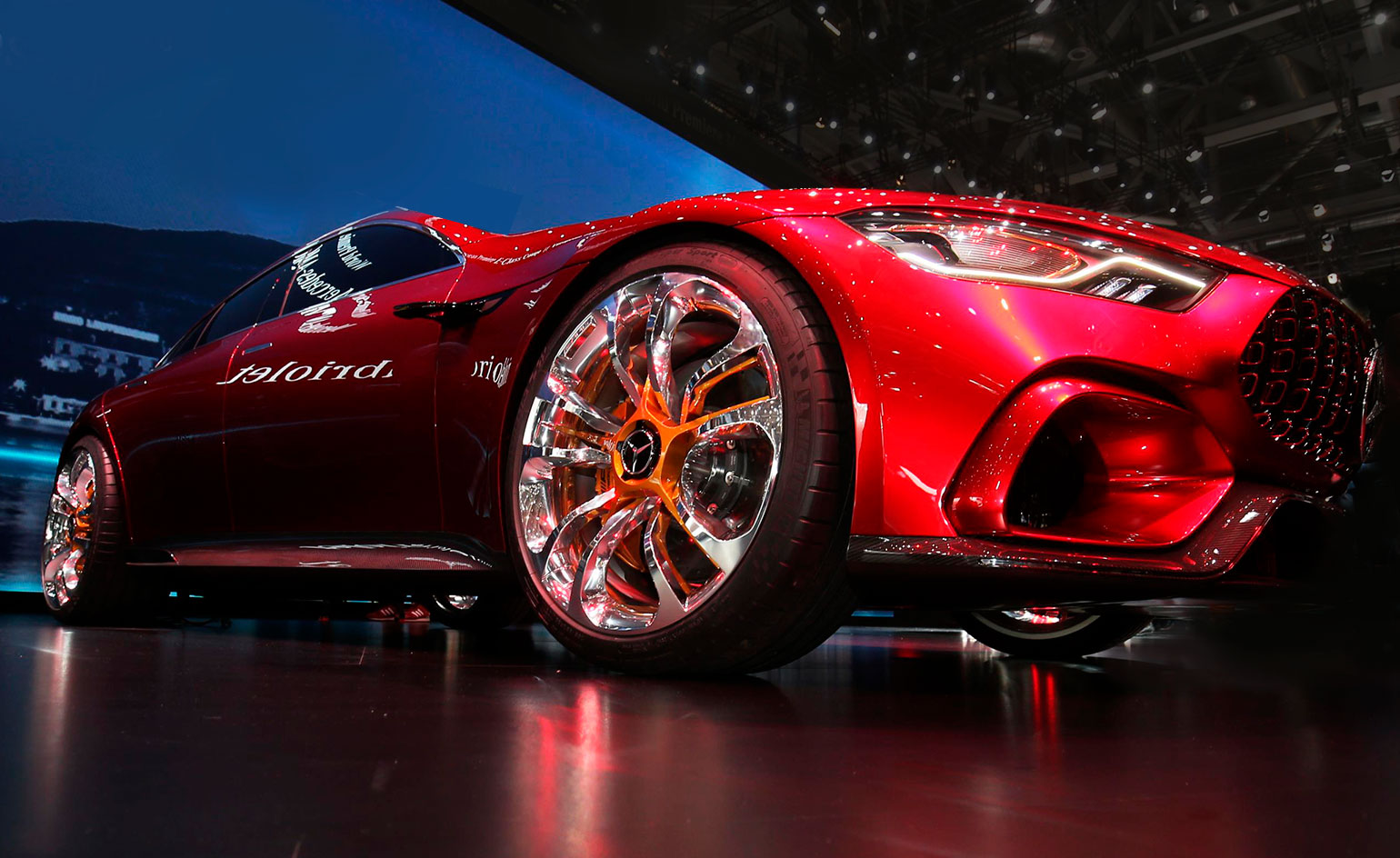
Mercedes-AMG GT Concept: Celebrating Mercedes performance arm AMG’s half-century history, the GT Concept previews the exterior design of the next series production model for the marque. ‘It is the most extreme expression of our design idiom,’ says design director Gorden Wagener. It showcases some clever design solutions – cameras replace wing mirrors and the three-dimensional lights cords in the daytime running lights are great for exploring new design themes. The brash red exterior hue has a special formulation so it shimmers in the light like liquid metal
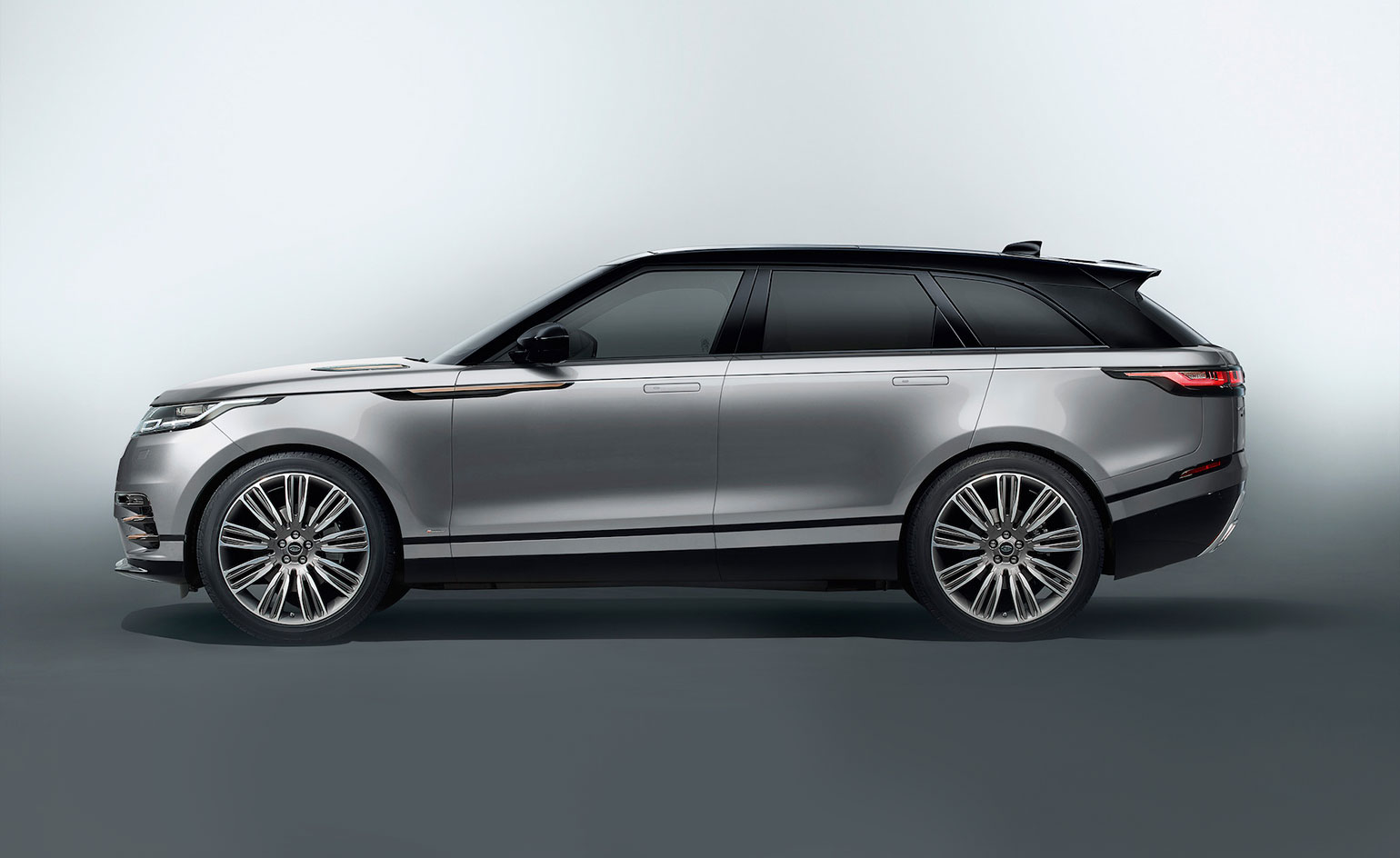
Range Rover Velar: The Range Rover Velar is an all-new car created to sit bellow the pinnacle Range Rover in Land Rover’s luxury model range. With its formal simplicity, its clean and clear visual language, and perfect proportions, it is arguably the most complete car in the current family. ‘It is the most urban, on-road vehicle we’ve designed this far,’ says design director Gerry McGovern. The Velar is based on the company’s aluminium intensive architecture to be light in weight yet rigid, and so promises great performance and agility. The clean and clear surfaces, swooping panoramic roof design and subtle elements such as the delicate door handles and slender full matrix laser LED headlights assist with aerodynamics
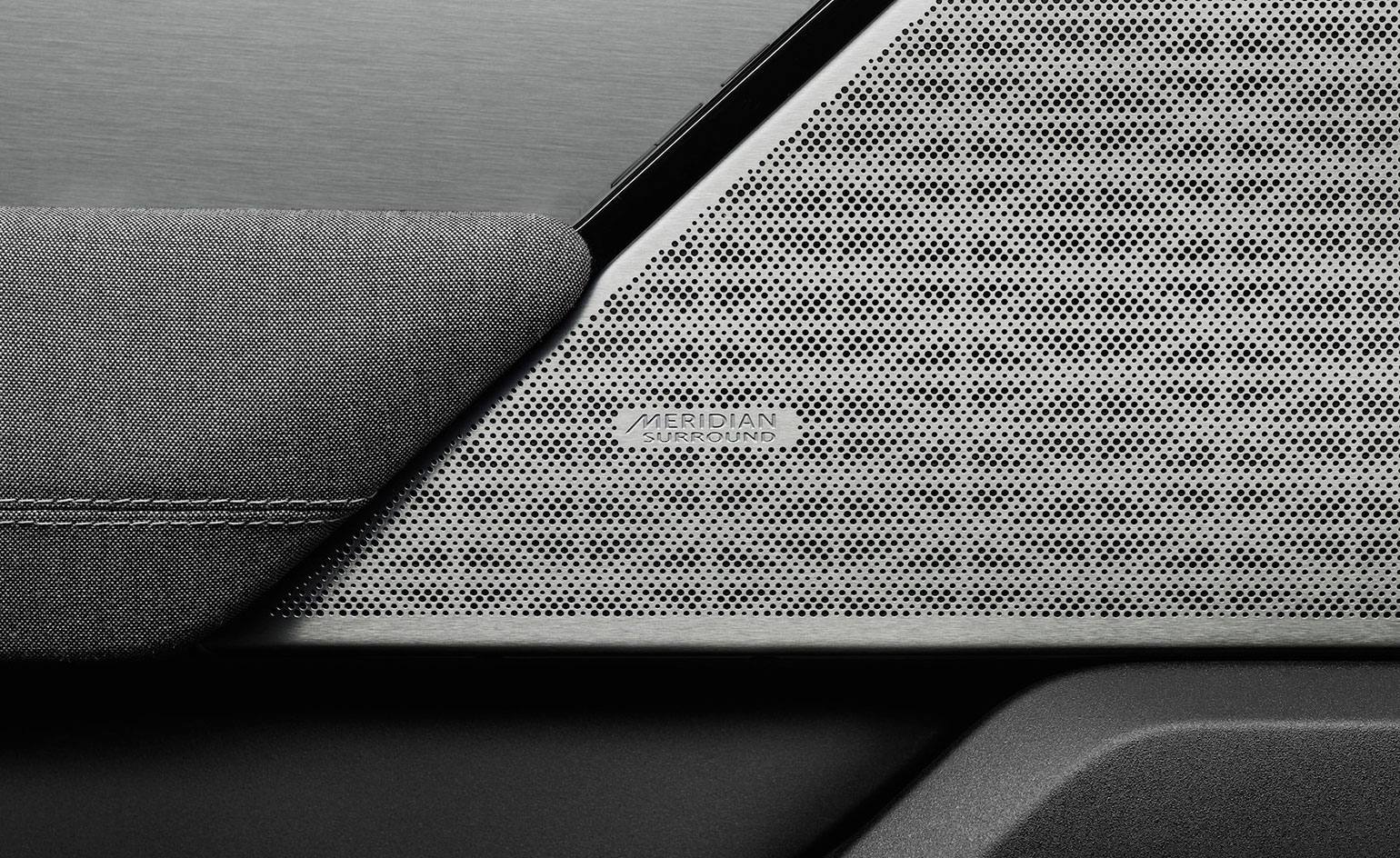
The Velar debuts the new dual-touchscreen infotainment system, with two ten-inch high-definition screens integrated seamlessly behind ‘secret-until-lit’ surfaces so the driver gets to choose what they see at any given time. Inside, the graphics are harmonious and the surfaces are simple for an effortlessness and relaxed sensory experience. The marque has worked with Kvadrat (the first auto collaboration for the textile firm) to offer ‘dapple grey’, a sustainable, premium textile seat fabric as an alternative to leather
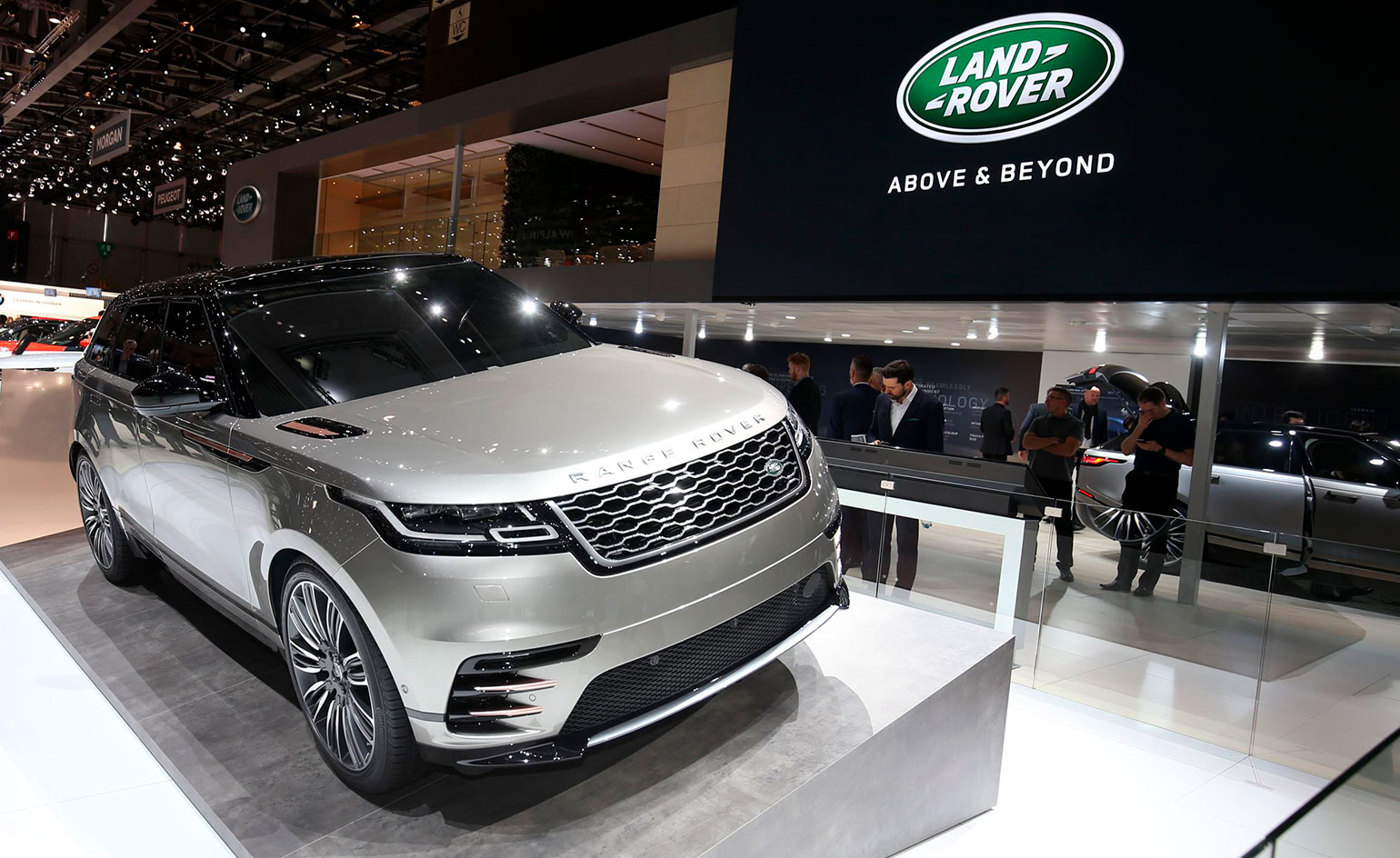
The feel is more furniture design than automotive, contributing to the living room cabin environment. ‘We are exploring materials that are alternatives to leather as an option but we are also responding to the shift taking place with our customers,’ says McGovern. On sale: summer 2017. Starting price: £44,830

McLaren 720S: McLaren Automotive is committed to advancing technology, working with interesting material combinations and complex shapes, evident in the latest 720S. Replacing the 650S – originally called the 12C and the marque’s first production car – this two-seat sports car debuts a bold new face and features an expansive, dramatic ‘fighter jet’ glass roof made possible by the highly-advanced, light and tough all-carbon tub at its core
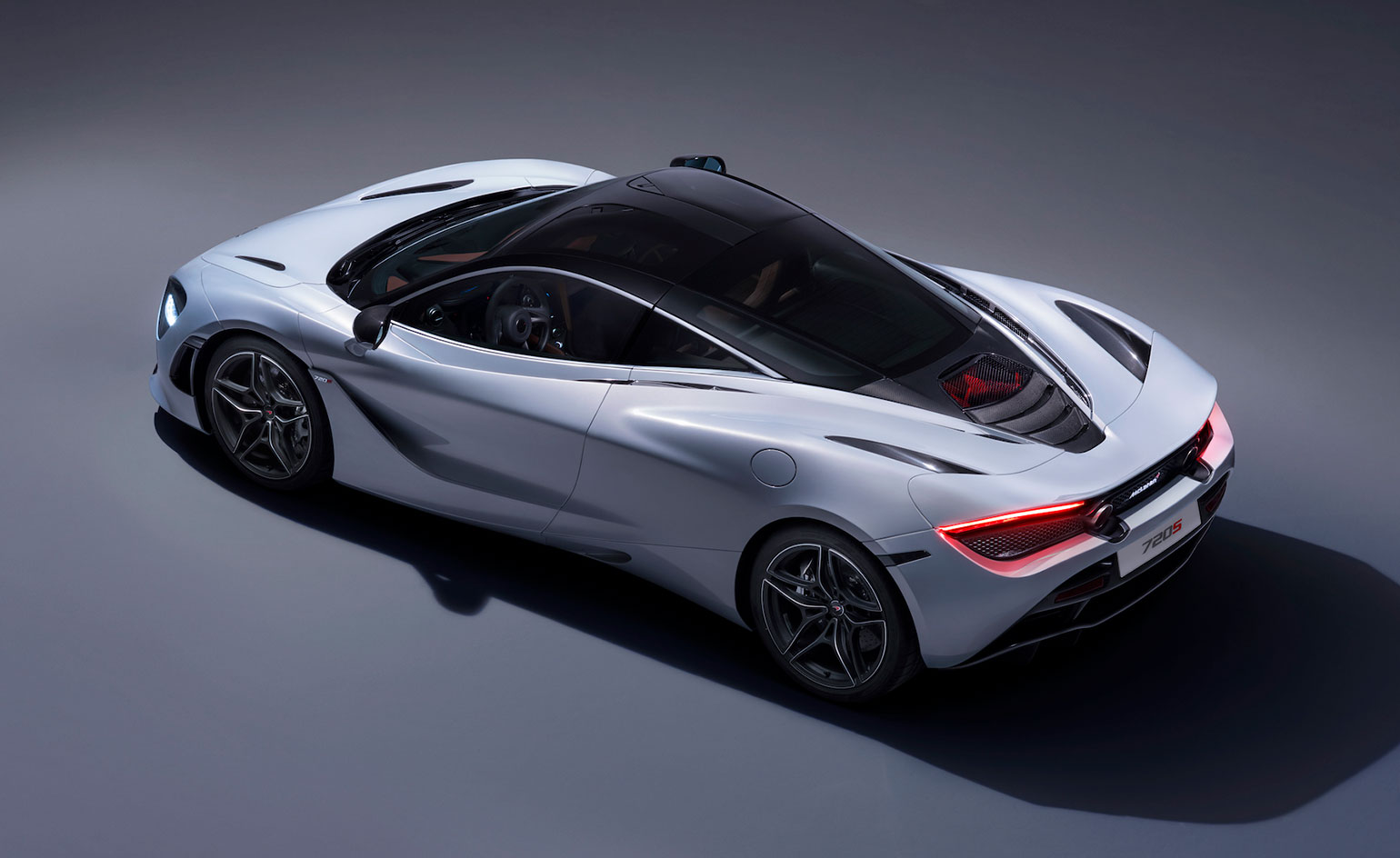
Form is very much concerned with assisting performance on all McLaren cars and the layered exterior and interior design is an expression of nimbleness and speed. There are no radiator intakes on the side of the car; instead the double-skin aerodynamic form of the doors channel air to the high-temperature radiators that cool the mid-mounted engine. To highlight the power further, the 710bhp four-litre V8 illuminates in the engine bay on ignition for an extra touch of drama. The interior design is a big leap forward for the marque, with a much more polished, luxurious and connected cabin environment which can be personalised at McLaren Special Operations. McLaren design cannot conform to the norms of motor car design, says chief designer Robert Melville. ‘We have to be brave and bold with our design and not follow trends.’ On sale: now. Starting price: £208,600
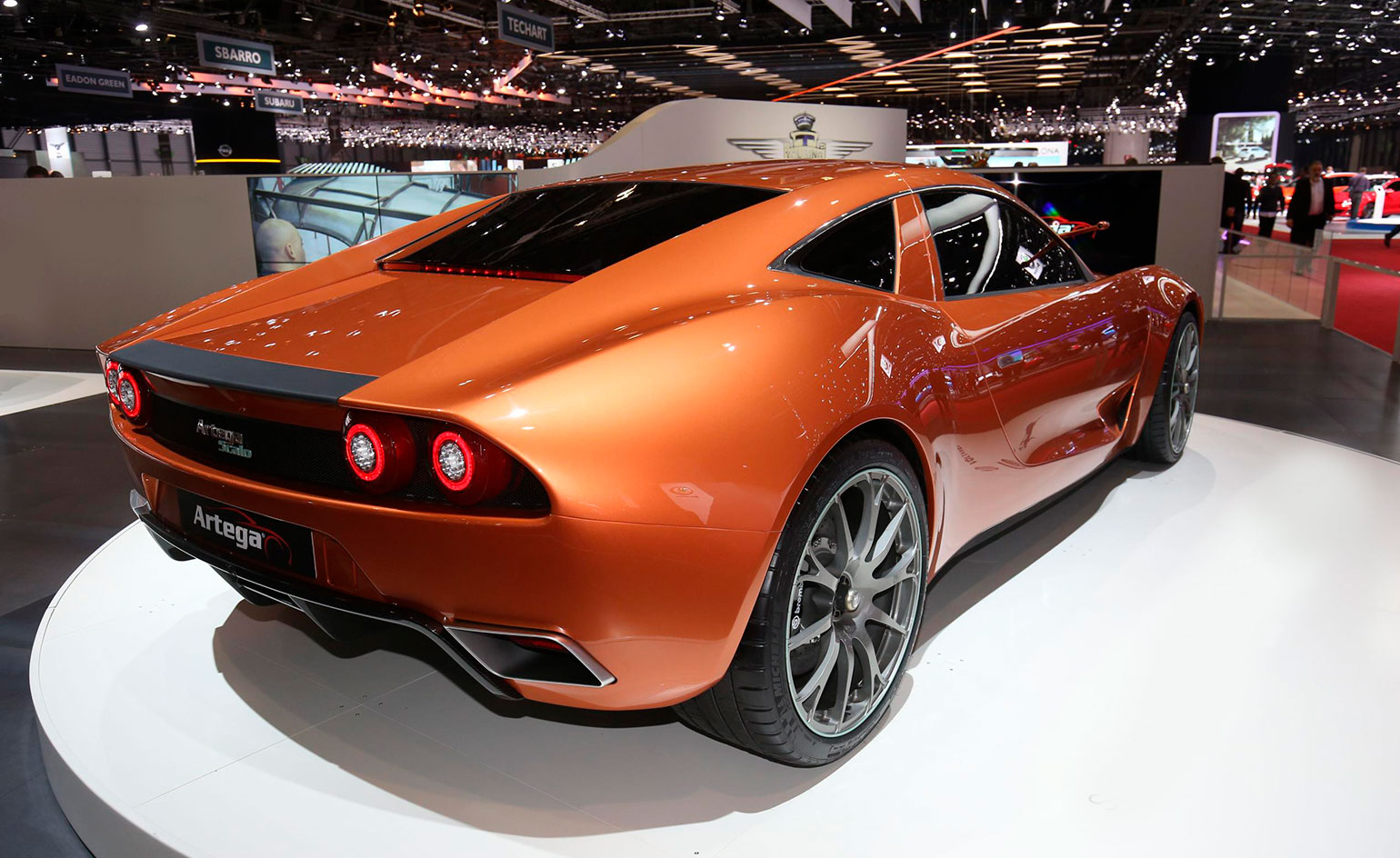
Touring Superleggera Artega Scalo Superelletra: Italian coachbuilder Touring Superleggera and German high-performance manufacturer Artega have teamed up to create this all-electric supercar. Only 50 are planned and the design takes from the original 2015 Scalo, which never made it to production. Power comes from four electric motors, two at each axle, together delivering a generous 1,020 horsepower. The makers say the car will sprint from 0 to 62 mph in just 2.7 seconds. On sale: late 2019. Price: to be confirmed
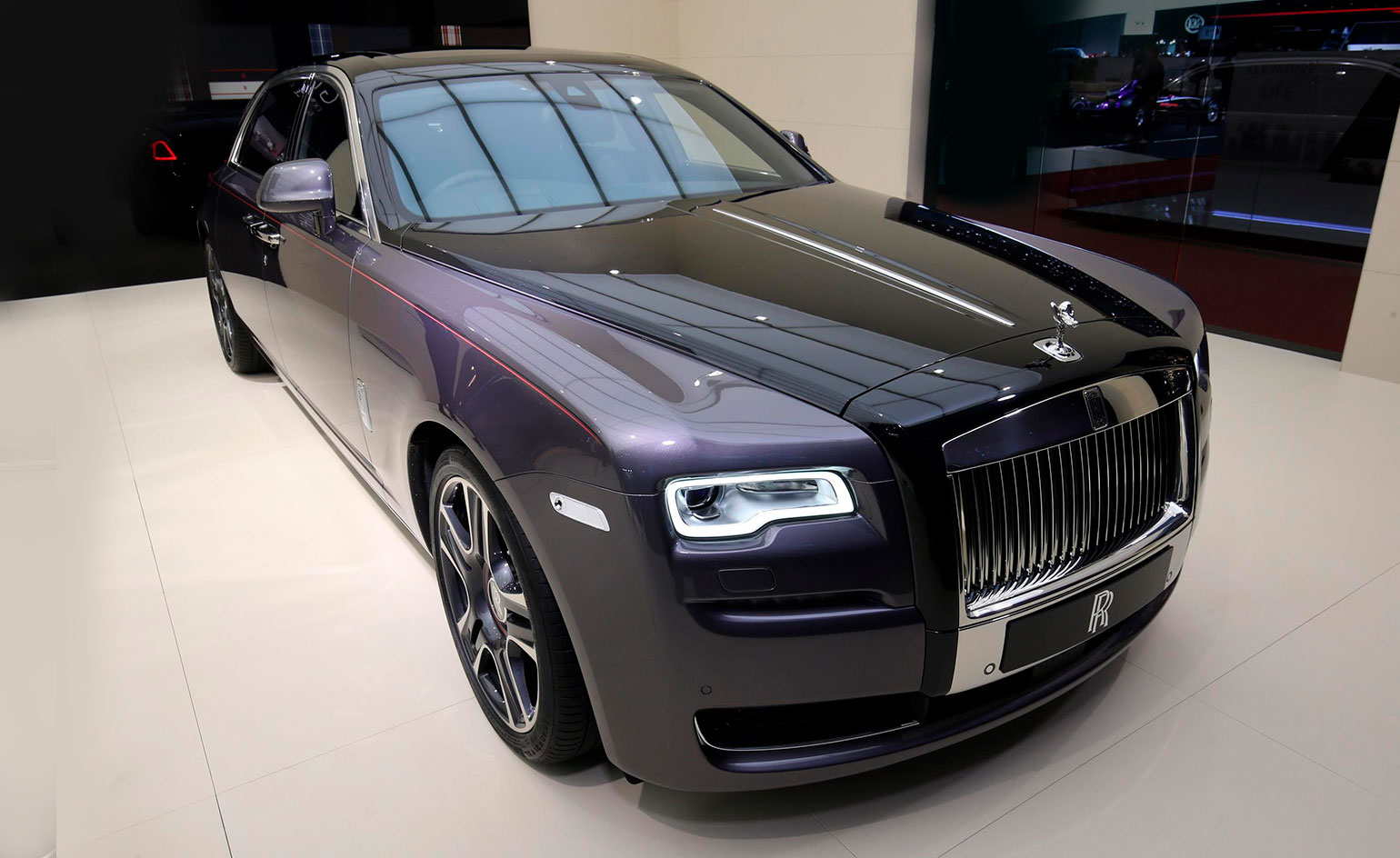
Rolls-Royce Ghost: This one-off customised Ghost was created for an unnamed customer as the ultimate expression of luxury. It previews the world’s first ‘diamond stardust’ paint, made from a thousand ethically-sourced crushed diamonds. The marque admits it the most expensive paint to ever grace the body of a Rolls-Royce

The process wasn’t easy, either. A specialist team at Goodwood spent two months examining the dimensions of each precious stone to see their transmission and reflection of light, then created a very fine diamond powder which they infused with the paint for a smooth surface and subtle sparkle. The master coachline painter then applied the final touches with a squirrel-hair paint brush, while the centre of the 21-inch wheels were hand-painted with a ‘mugello red’ pinstripe
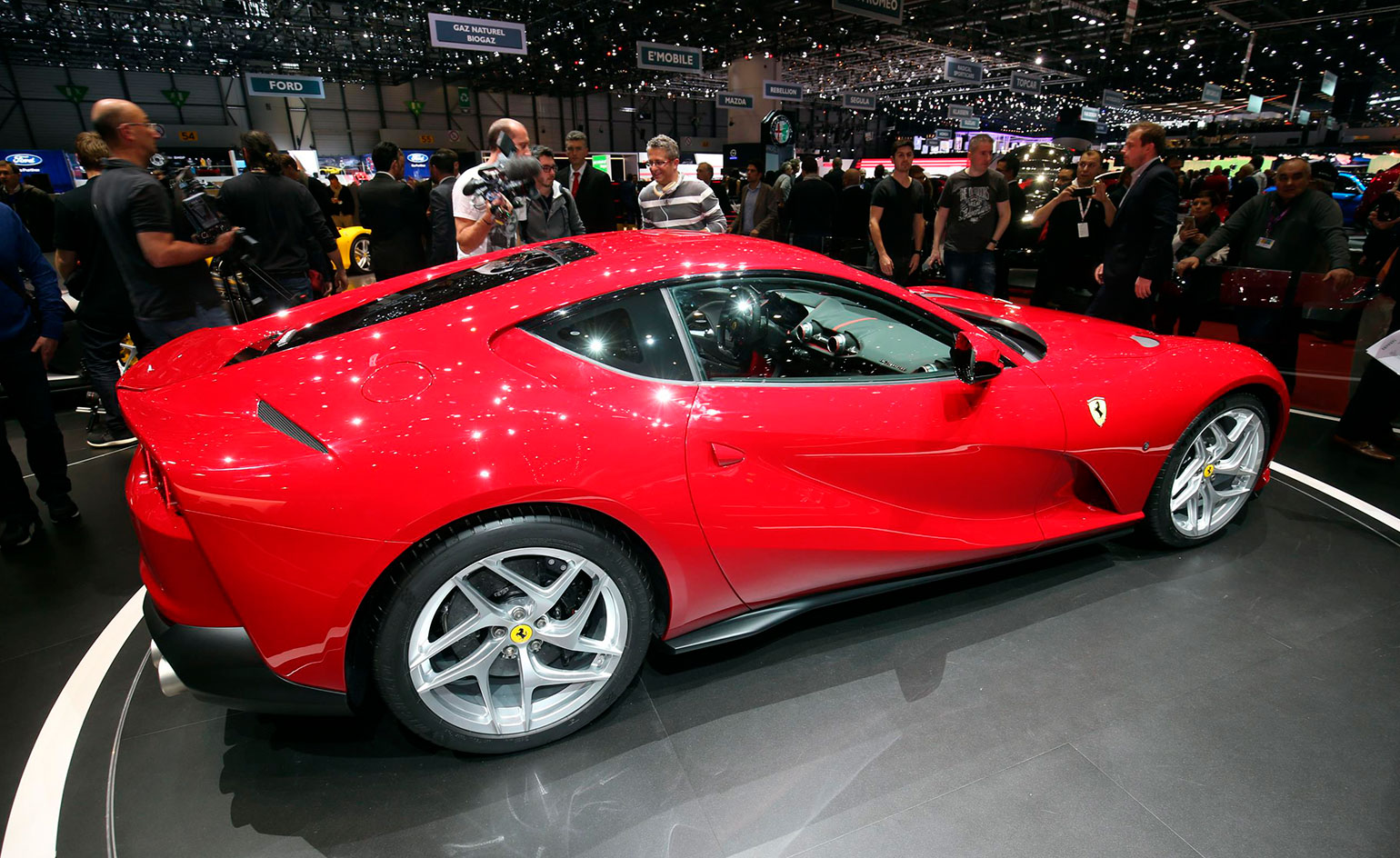
Ferrari 812 Superfast: The 812 Superfast proceeds the F12berlinetta as Maranello’s fastest, most powerful production car. The front mid-engine, rear-wheel-drive grand tourer carries a 6.5 litre V12, promising 800 horsepower, 0–60 mph in just 2.9 seconds and a top speed of 211 mph. This will be the last Ferrari with a naturally aspirated engine as the marque moves towards turbochargers and hybrid assists for improved emissions in its sports cars. Price: to be confirmed
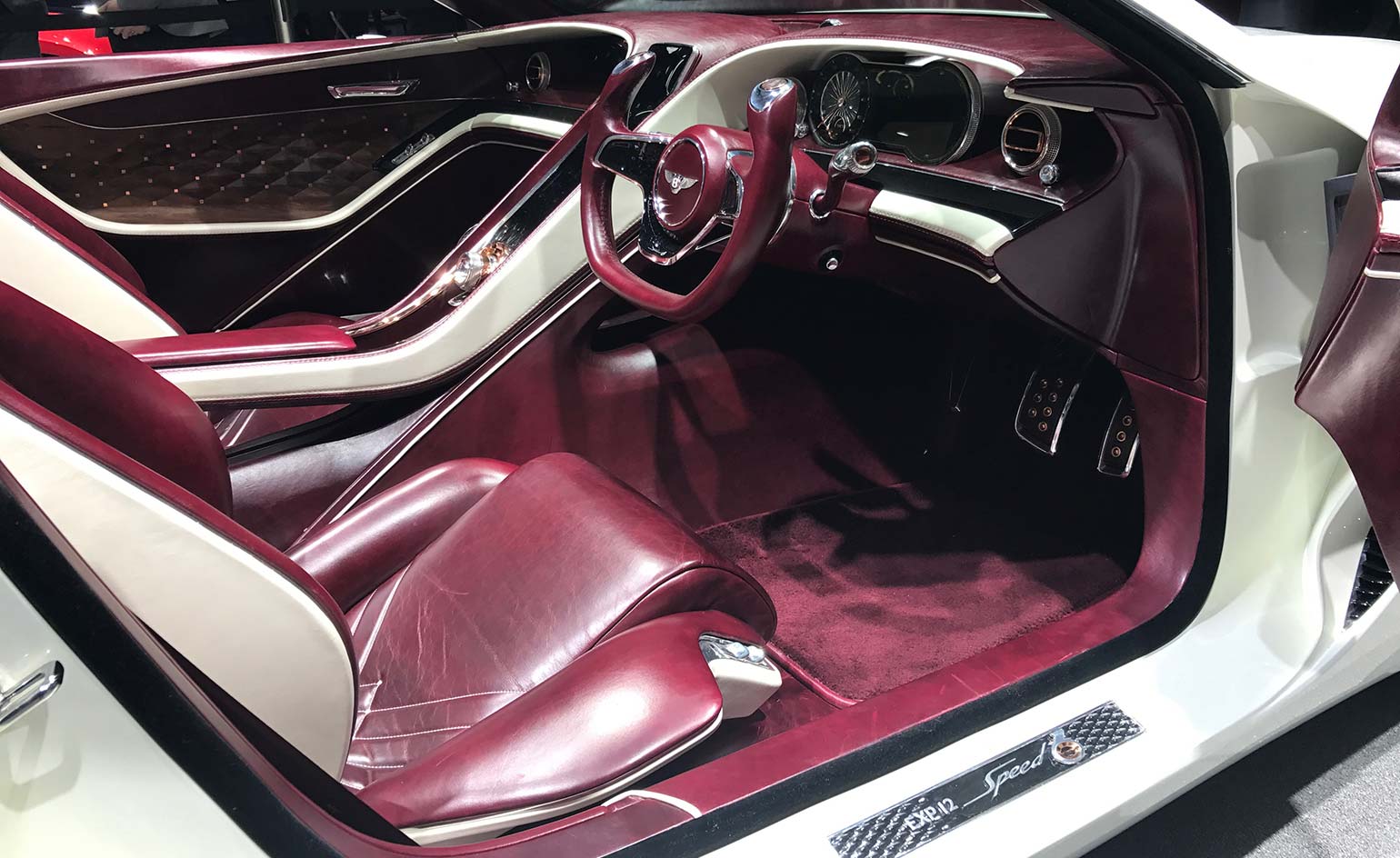
Bentley EXP12 Speed 6e Concept: The 6e is a bed of ideas for Bentley. The convertible electric study vehicle evolves some of the themes explored in the earlier coupé concept of the same name, via shapes, textures and materials. The badge in the radiator grille illuminates as an homage to the Speed Six of the 1920s. The integrated headlights are a step forward in the cut crystal theme, in this car emphasising the classic four headlights. The cabin works with some interesting material ideas – quilted wood in the door panels feature once again and the central console is carved from a single piece of curved glass, where everything is accessible through the high-definition OLED screen. Design director Stefan Sielaff says the 6e ‘feeds into our story of what we’re going to do with the next generation of cars, and it shows the direction of the new Continental which you’ll see in September’
INFORMATION
For more information, visit the Geneva International Motor Show website
Wallpaper* Newsletter
Receive our daily digest of inspiration, escapism and design stories from around the world direct to your inbox.
A writer and editor based in London, Nargess contributes to various international publications on all aspects of culture. She is editorial director on Voices, a US publication on wine, and has authored a few lifestyle books, including The Life Negroni.
-
 This new Vondom outdoor furniture is a breath of fresh air
This new Vondom outdoor furniture is a breath of fresh airDesigned by architect Jean-Marie Massaud, the ‘Pasadena’ collection takes elegance and comfort outdoors
By Simon Mills
-
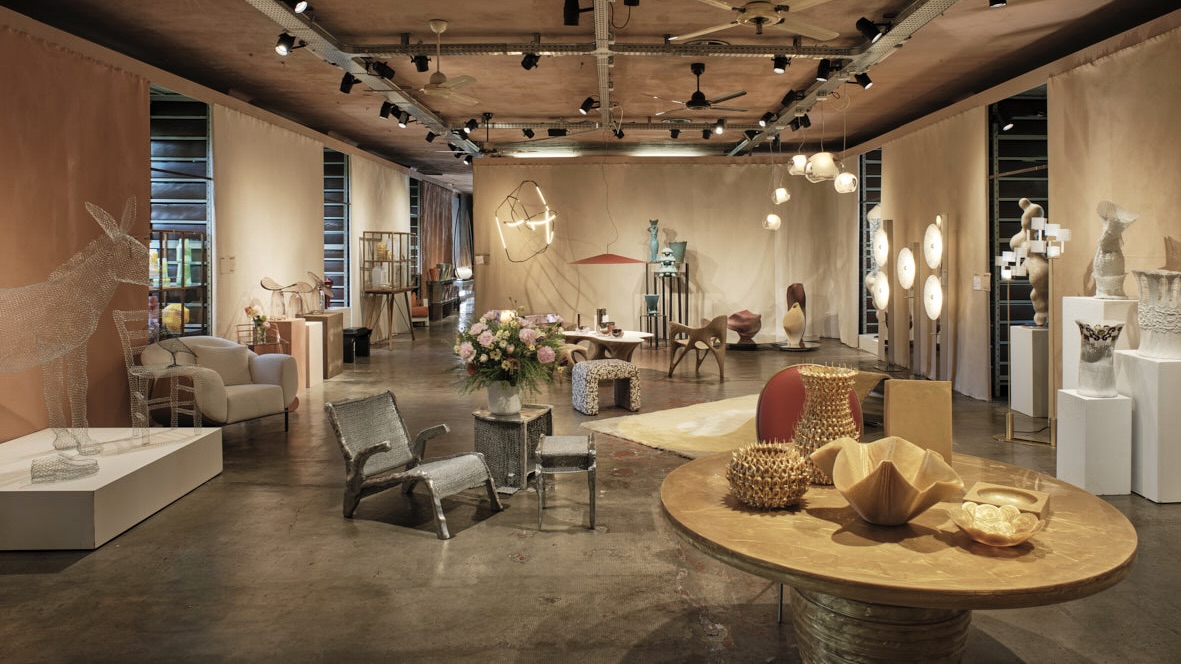 Eight designers to know from Rossana Orlandi Gallery’s Milan Design Week 2025 exhibition
Eight designers to know from Rossana Orlandi Gallery’s Milan Design Week 2025 exhibitionWallpaper’s highlights from the mega-exhibition at Rossana Orlandi Gallery include some of the most compelling names in design today
By Anna Solomon
-
 Nikos Koulis brings a cool wearability to high jewellery
Nikos Koulis brings a cool wearability to high jewelleryNikos Koulis experiments with unusual diamond cuts and modern materials in a new collection, ‘Wish’
By Hannah Silver
-
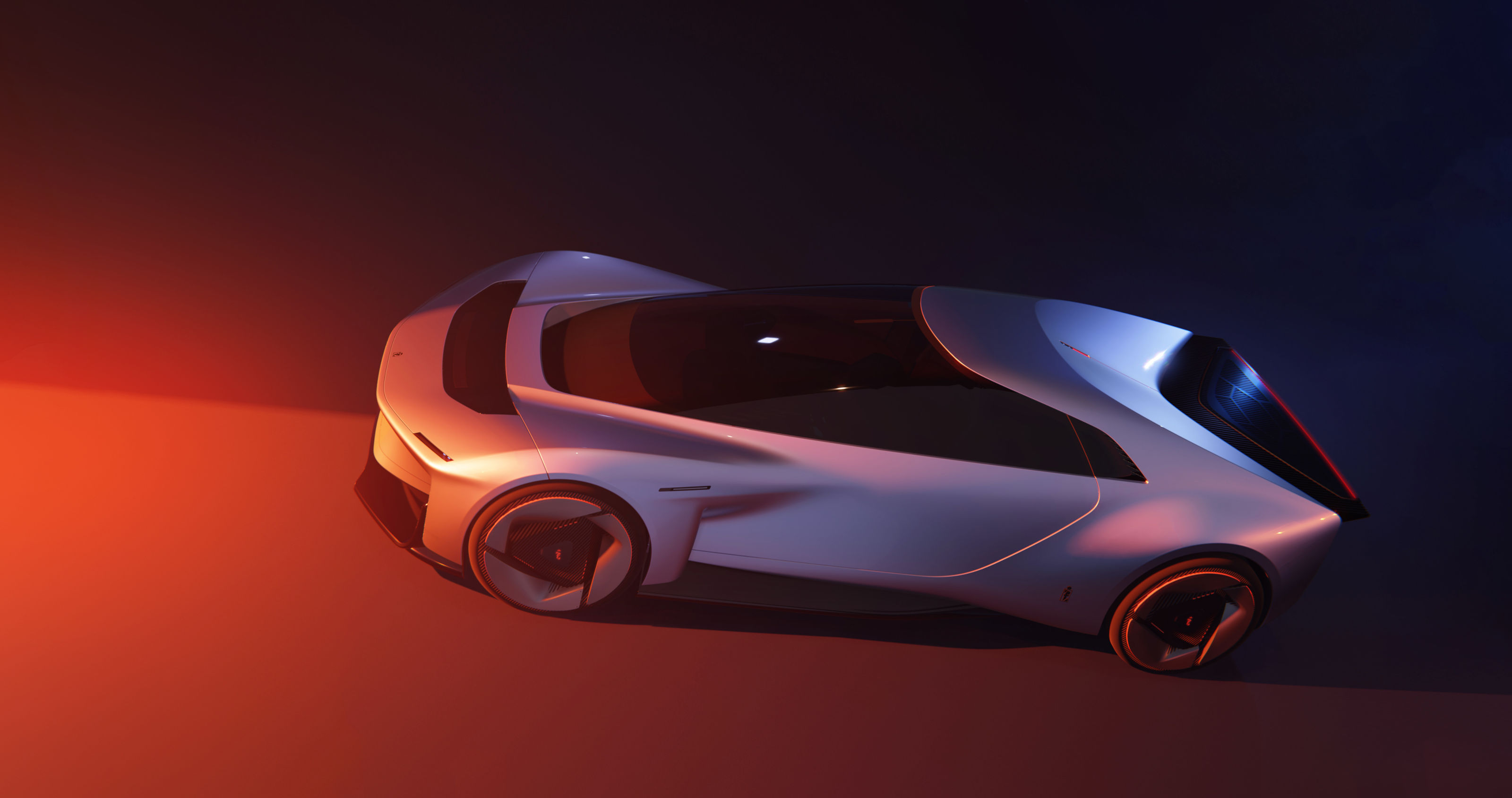 The return of the Geneva Motor Show (to Geneva) as a place for global debuts
The return of the Geneva Motor Show (to Geneva) as a place for global debutsThe Geneva Motor Show is back. After 2020’s pandemic cancellation and an ‘exported’ event in Qatar in 2023, the organisers of GIMS 2024 had their work cut out to stay relevant. Here are our highlights
By Guy Bird
-
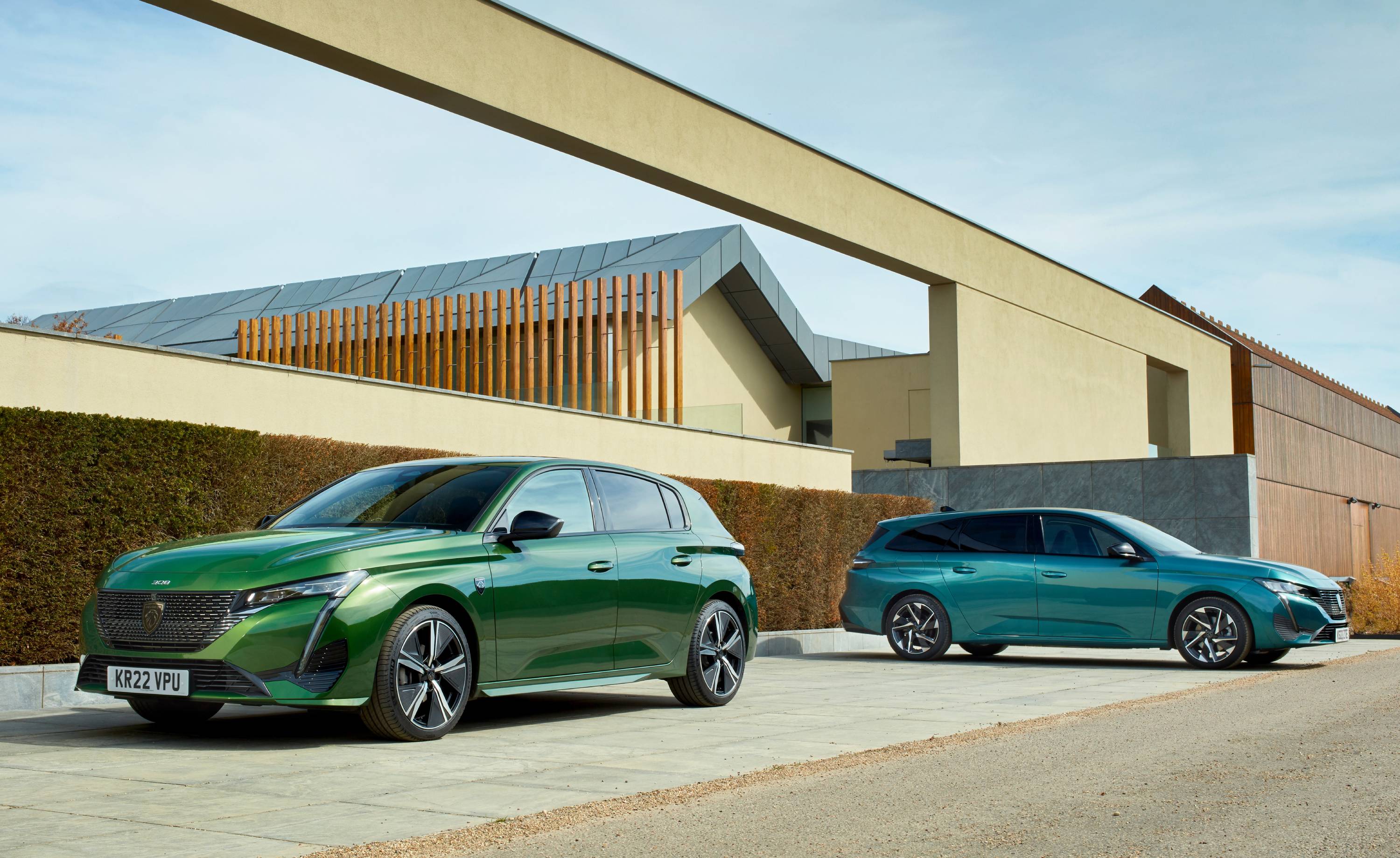 Peugeot’s sparky 308 gets hybrid power and handsome lines
Peugeot’s sparky 308 gets hybrid power and handsome linesThe Peugeot 308 proves that mass-market design needn’t be dull, blending hybrid power with sharp lines and excellent detailing
By Jonathan Bell
-
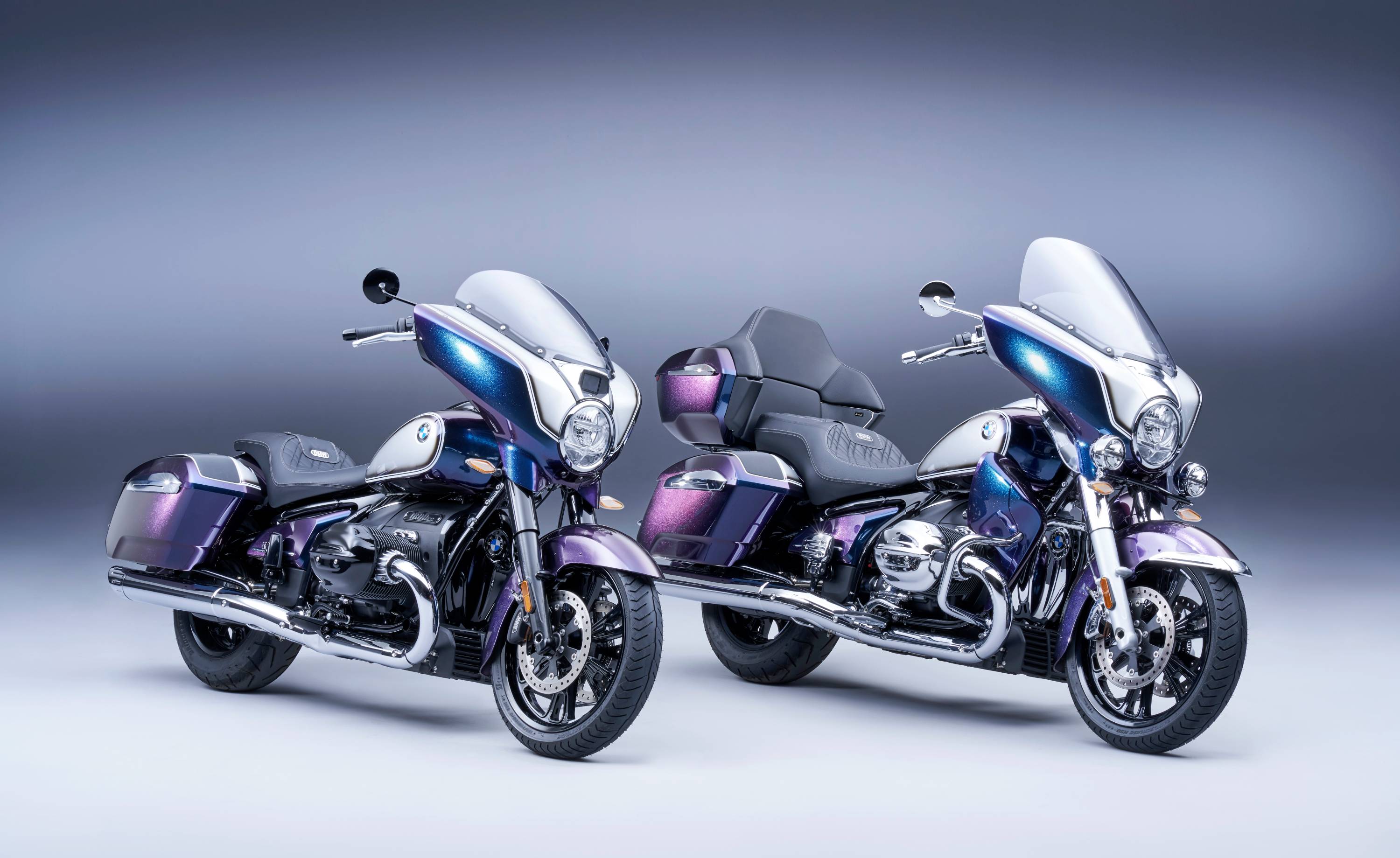 BMW Motorrad brings out the big guns for its newest cruisers
BMW Motorrad brings out the big guns for its newest cruisersBMW Motorrad R 18 Bagger and Transcontinental set the tone for high-voltage cruising with a brand collaboration with speaker specialist Marshall
By George Chapman
-
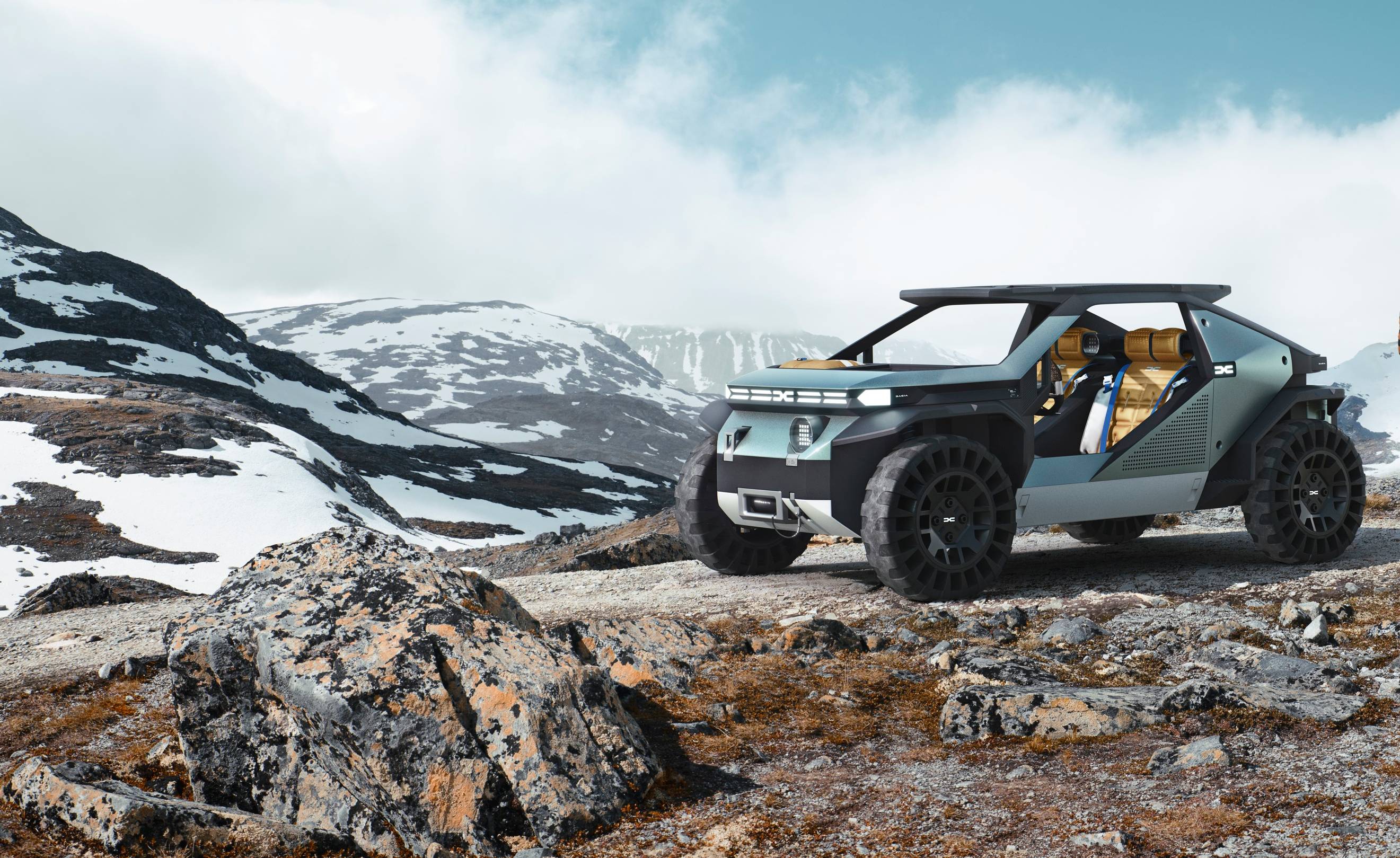 Dacia’s new Manifesto concept is a true outdoor utility vehicle
Dacia’s new Manifesto concept is a true outdoor utility vehicleUtilitarian auto brand Dacia sets a bold new agenda with its Manifesto, a concept car pitched at the active outdoor market
By Jonathan Bell
-
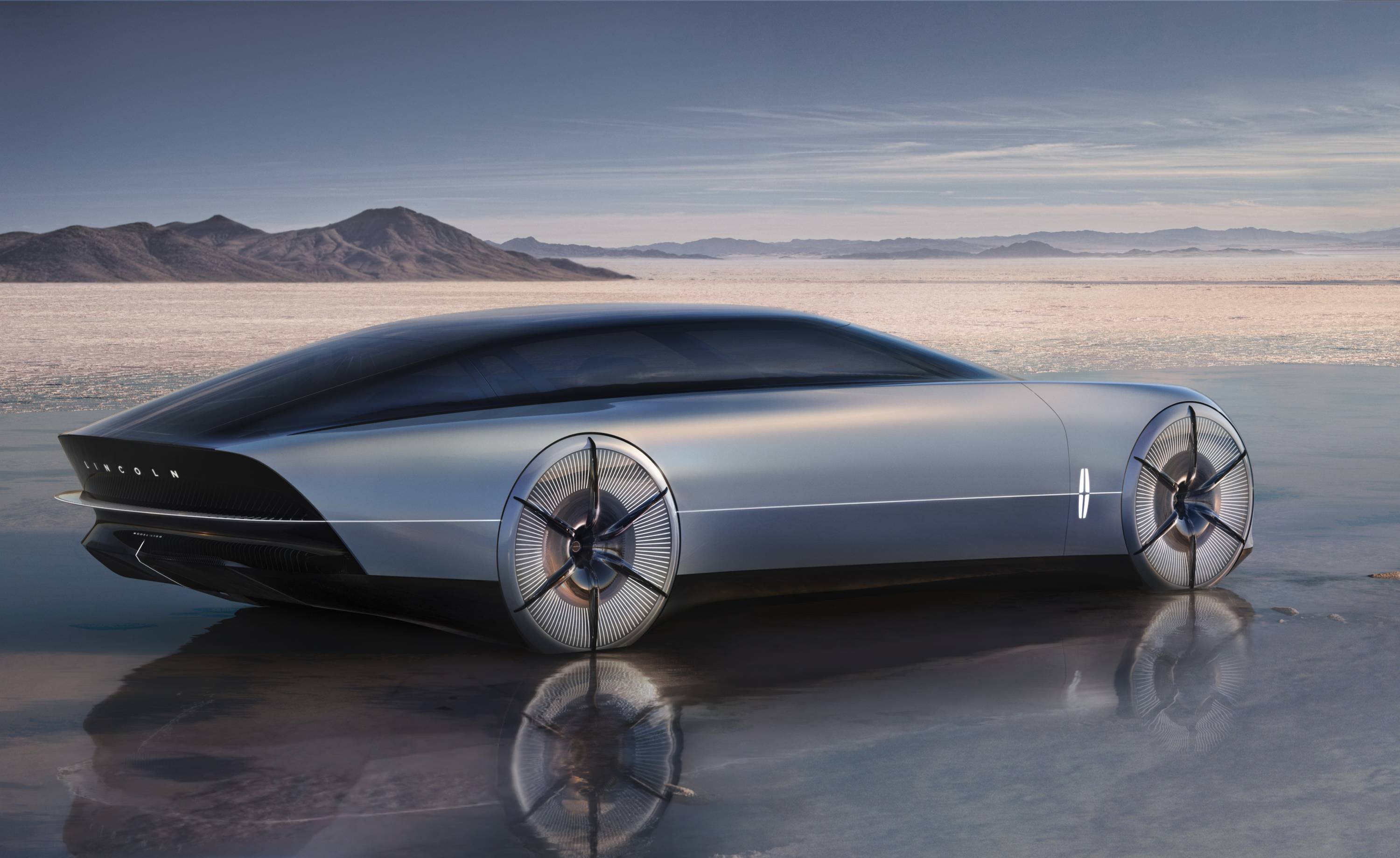 The sun sets on traditional supercars at California’s Monterey Car Week
The sun sets on traditional supercars at California’s Monterey Car WeekMonterey Car Week, the world’s most prestigious car gathering, is showcasing ever-more extravagant special editions, coachbuilt cars and all-new electric concepts. Here are seven key machines from 2022
By Rory FH Smith
-
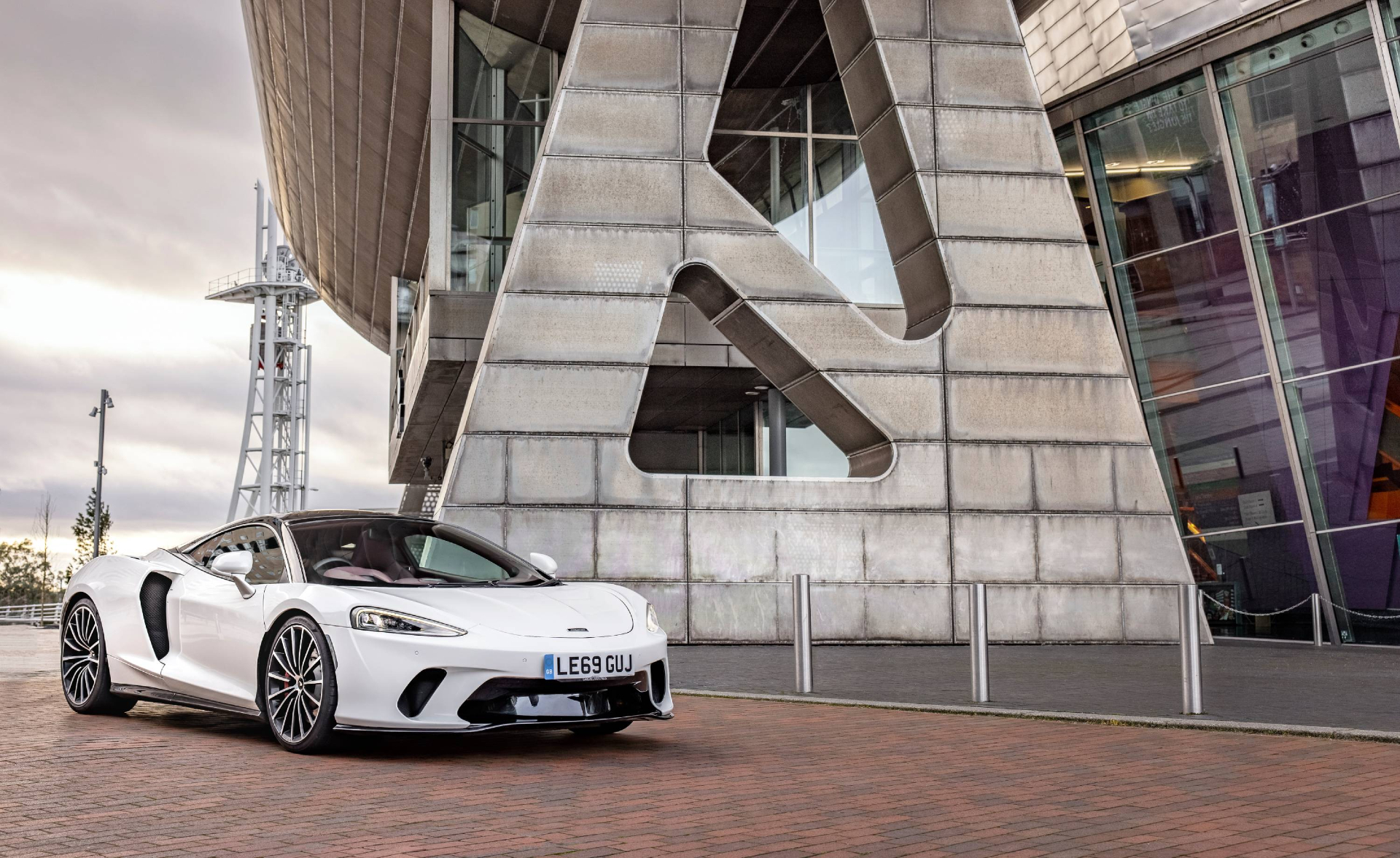 Is McLaren’s GT a sports car, a tourer, or the best of both?
Is McLaren’s GT a sports car, a tourer, or the best of both?The McLaren GT is a capable all-rounder dressed up in svelte supercar clothes. It might also be the last of its type
By Jonathan Bell
-
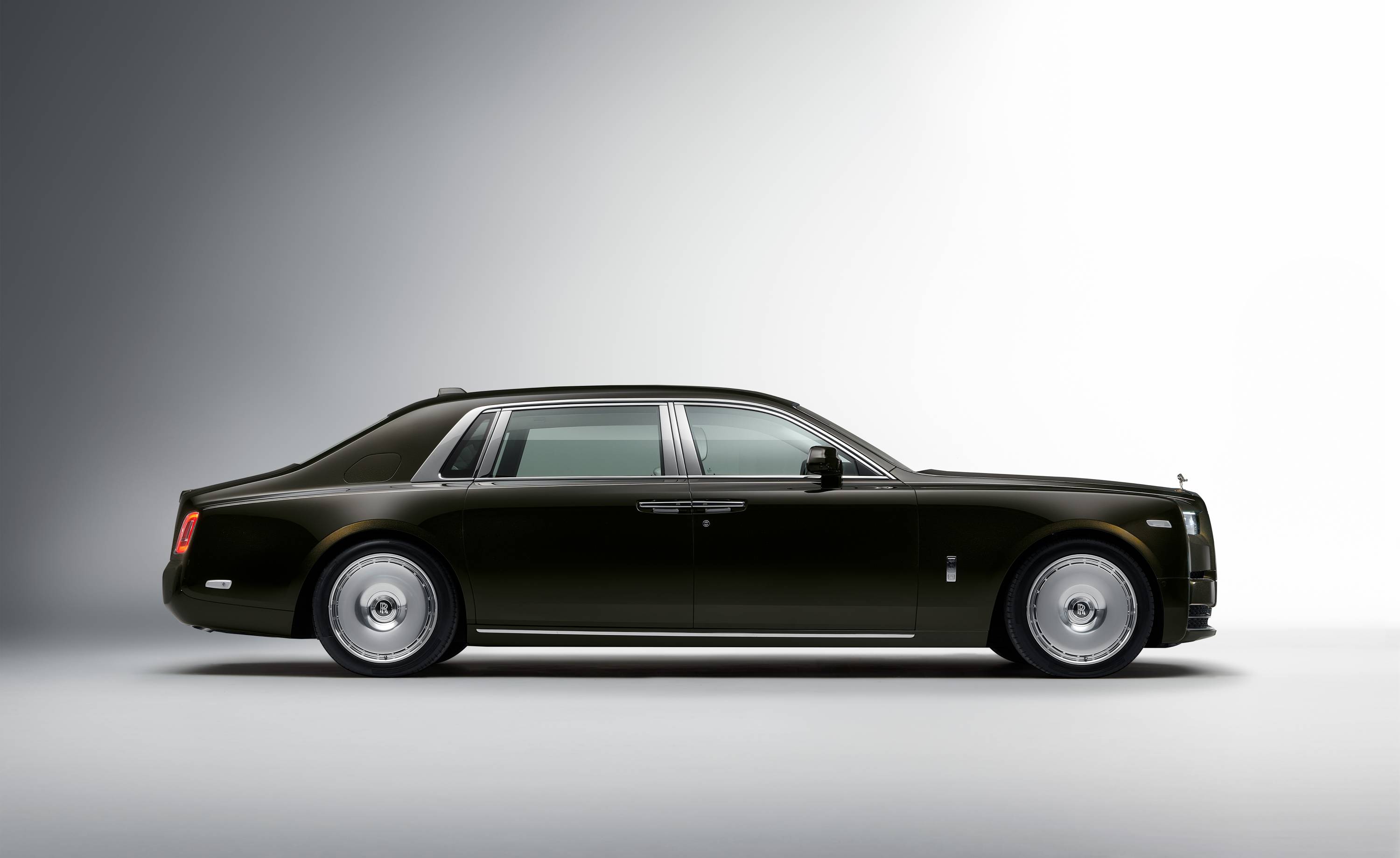 Rolls-Royce puts the Phantom back on its lofty pedestal
Rolls-Royce puts the Phantom back on its lofty pedestalA mid-life refresh ensures the flagship Rolls-Royce Phantom Series II is at the top of its game, a last hurrah for traditional engines before an electrified future
By Jonathan Bell
-
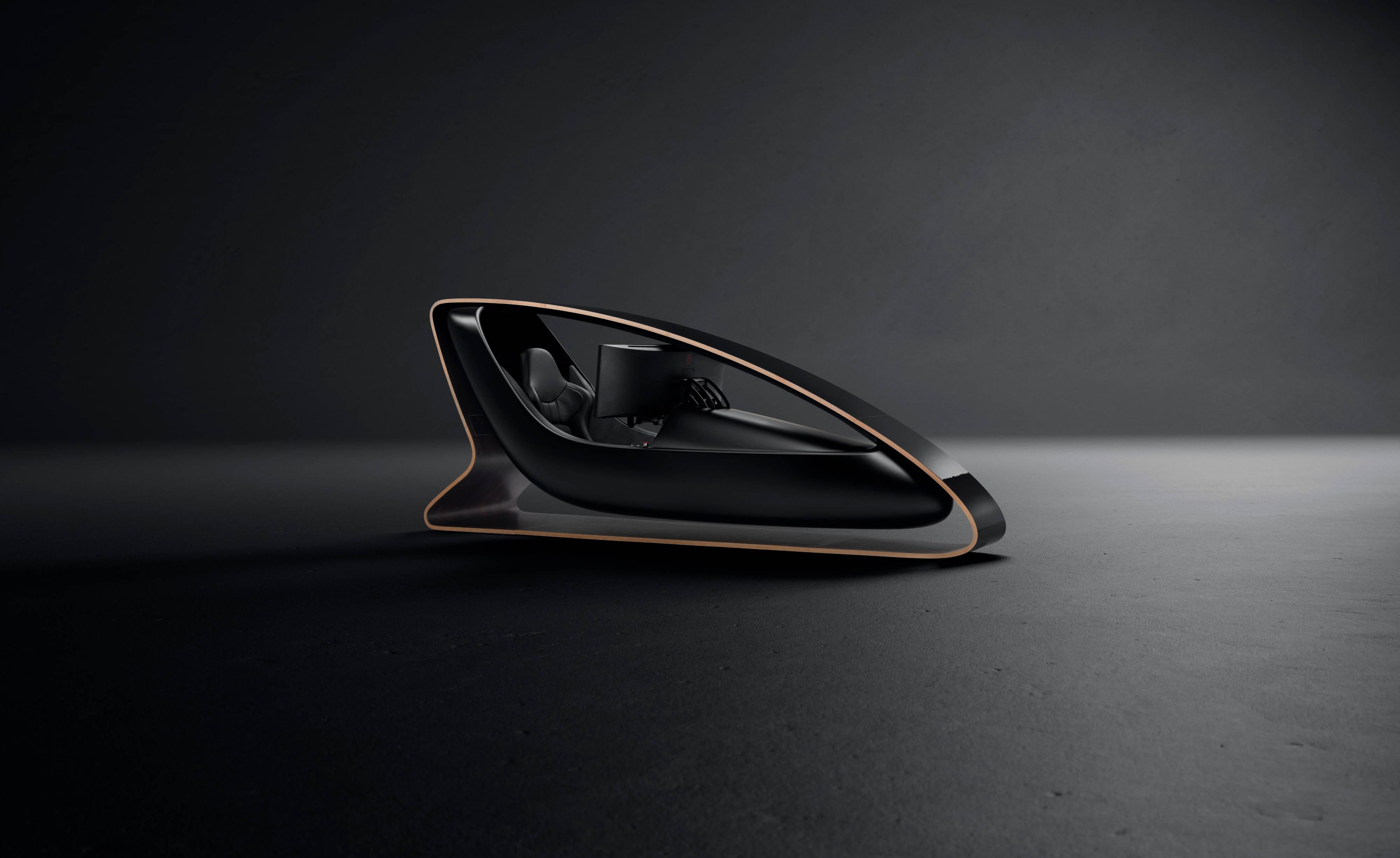 Prodrive’s new racing simulator is shaped by Callum to be front of the grid
Prodrive’s new racing simulator is shaped by Callum to be front of the gridThe racing simulator shapes up – this new design from Prodrive and Callum is honed for the high-end games room
By Jonathan Bell